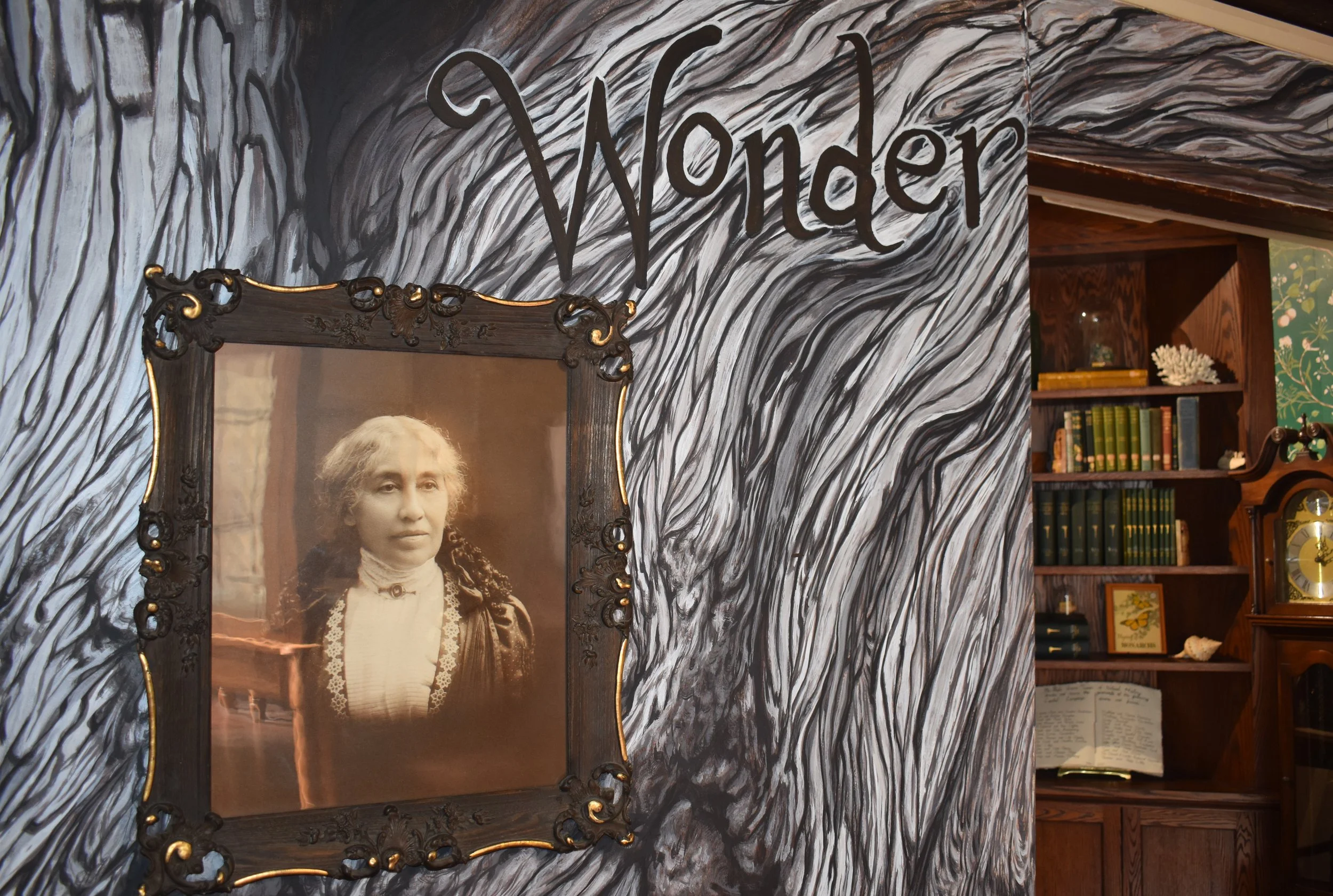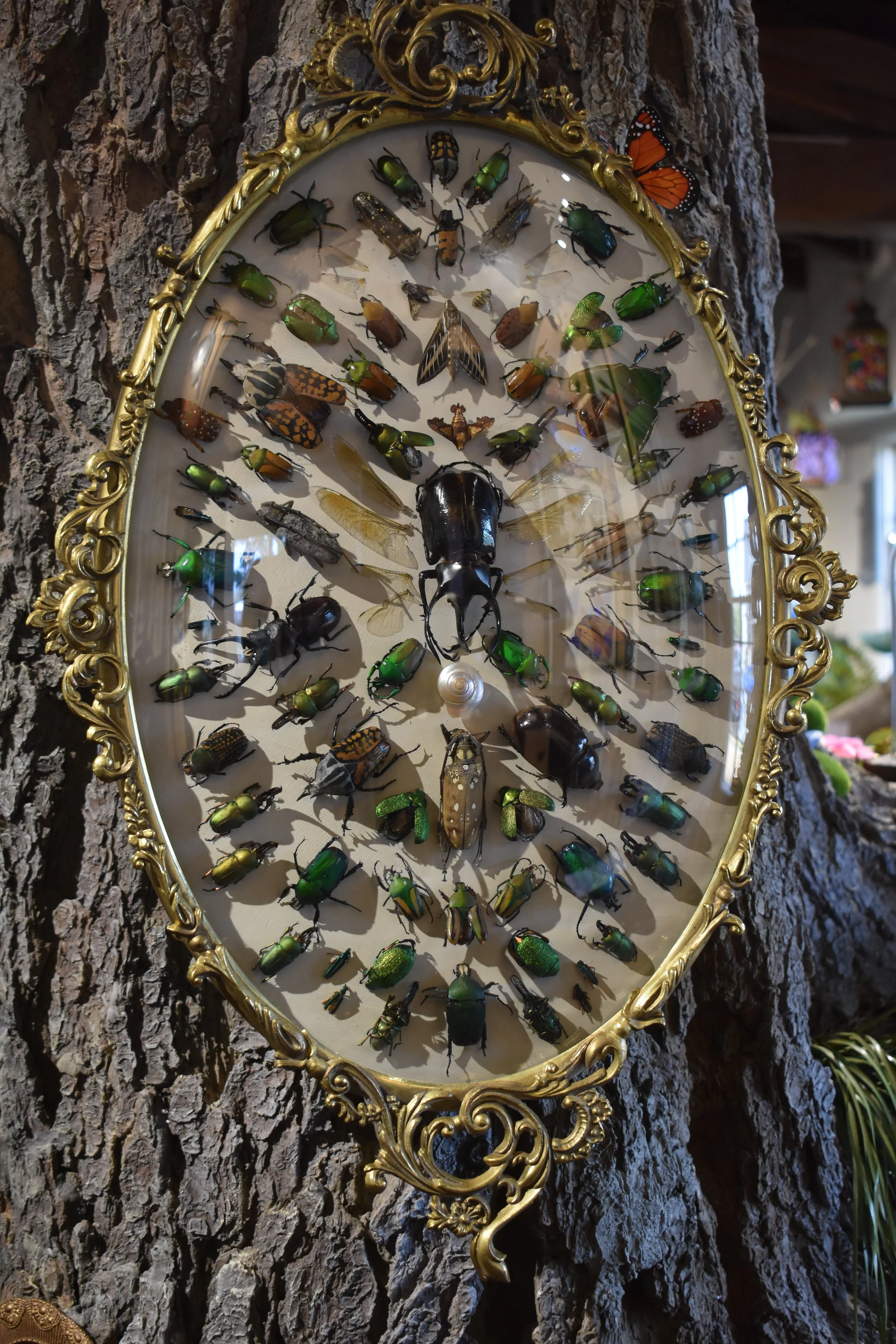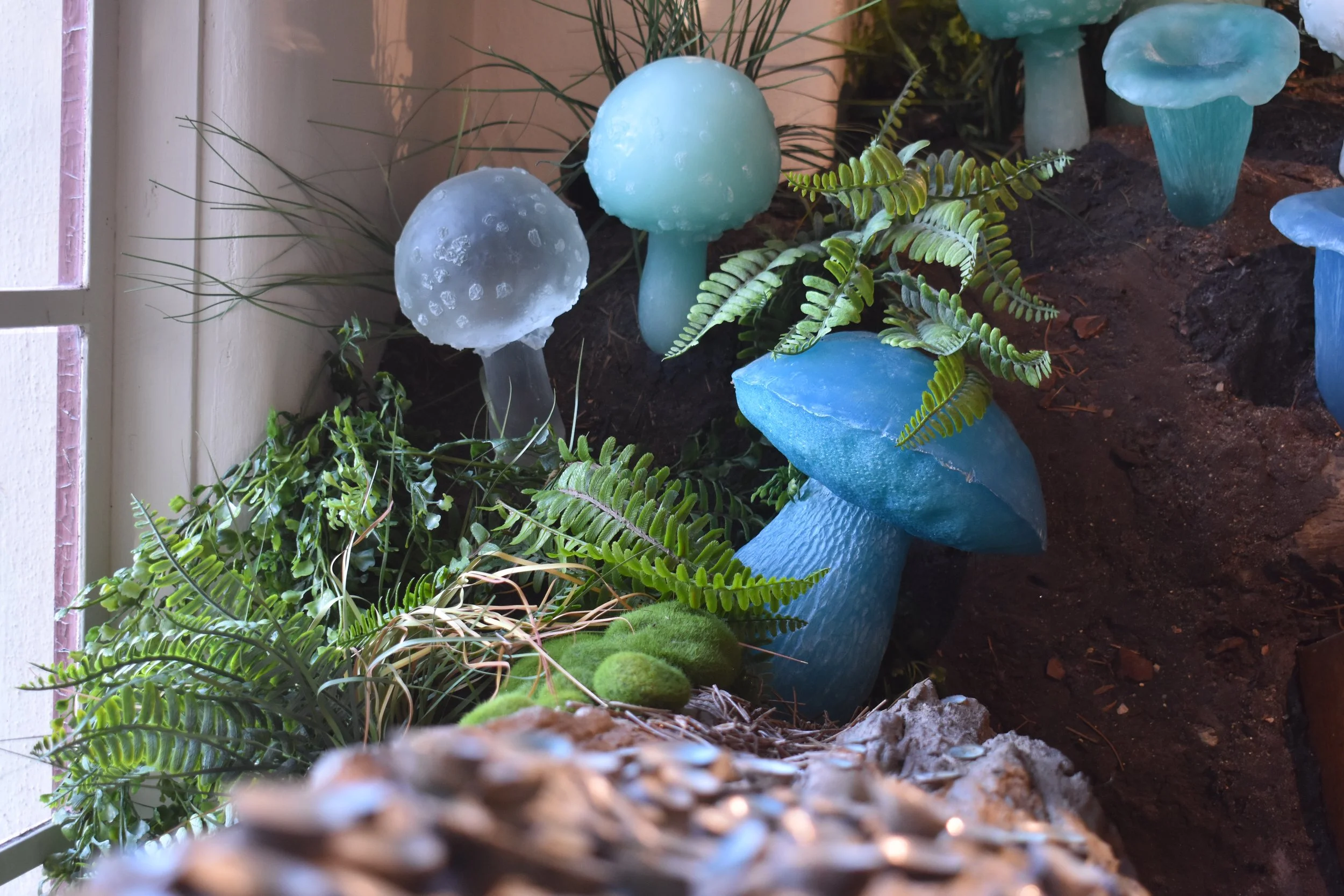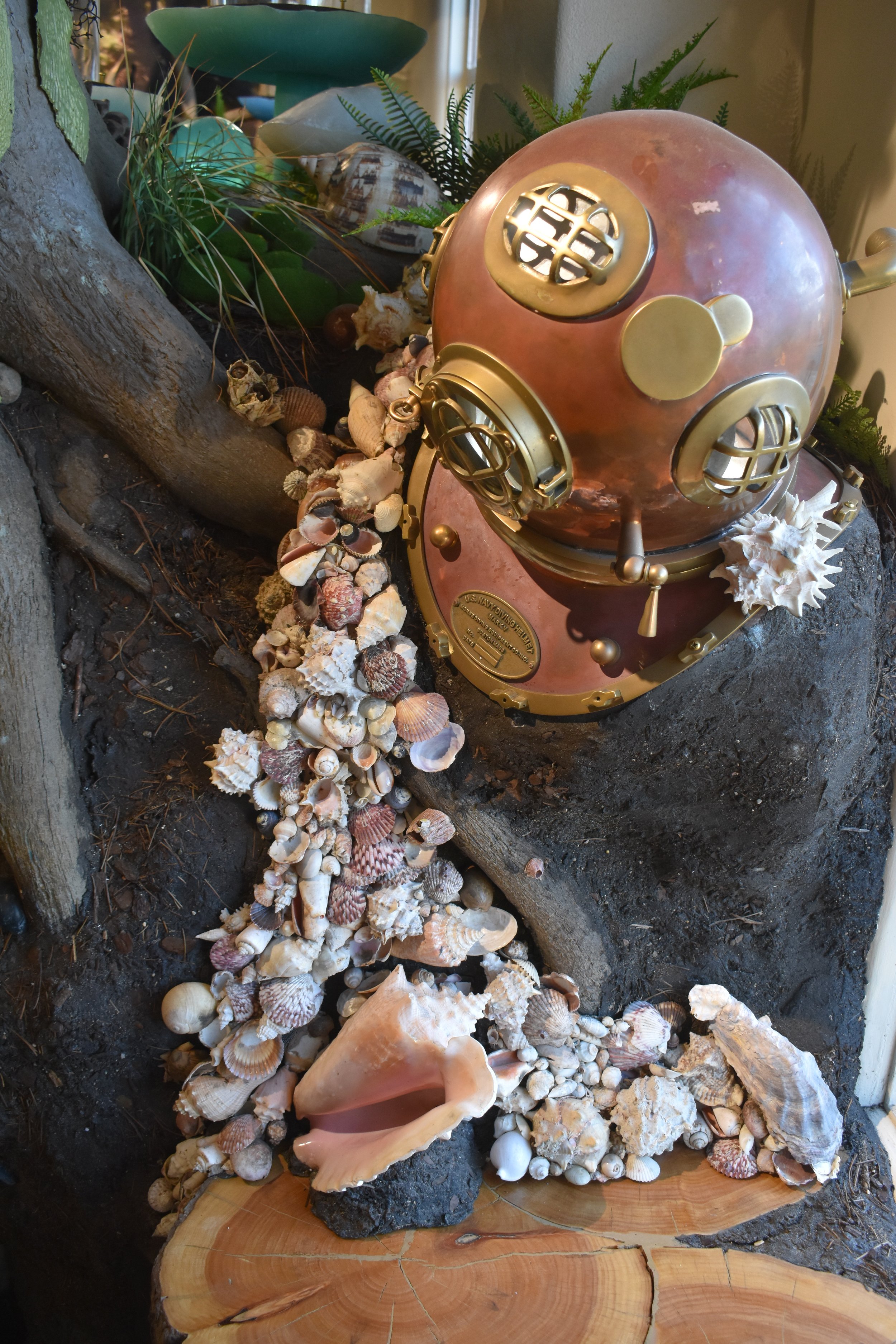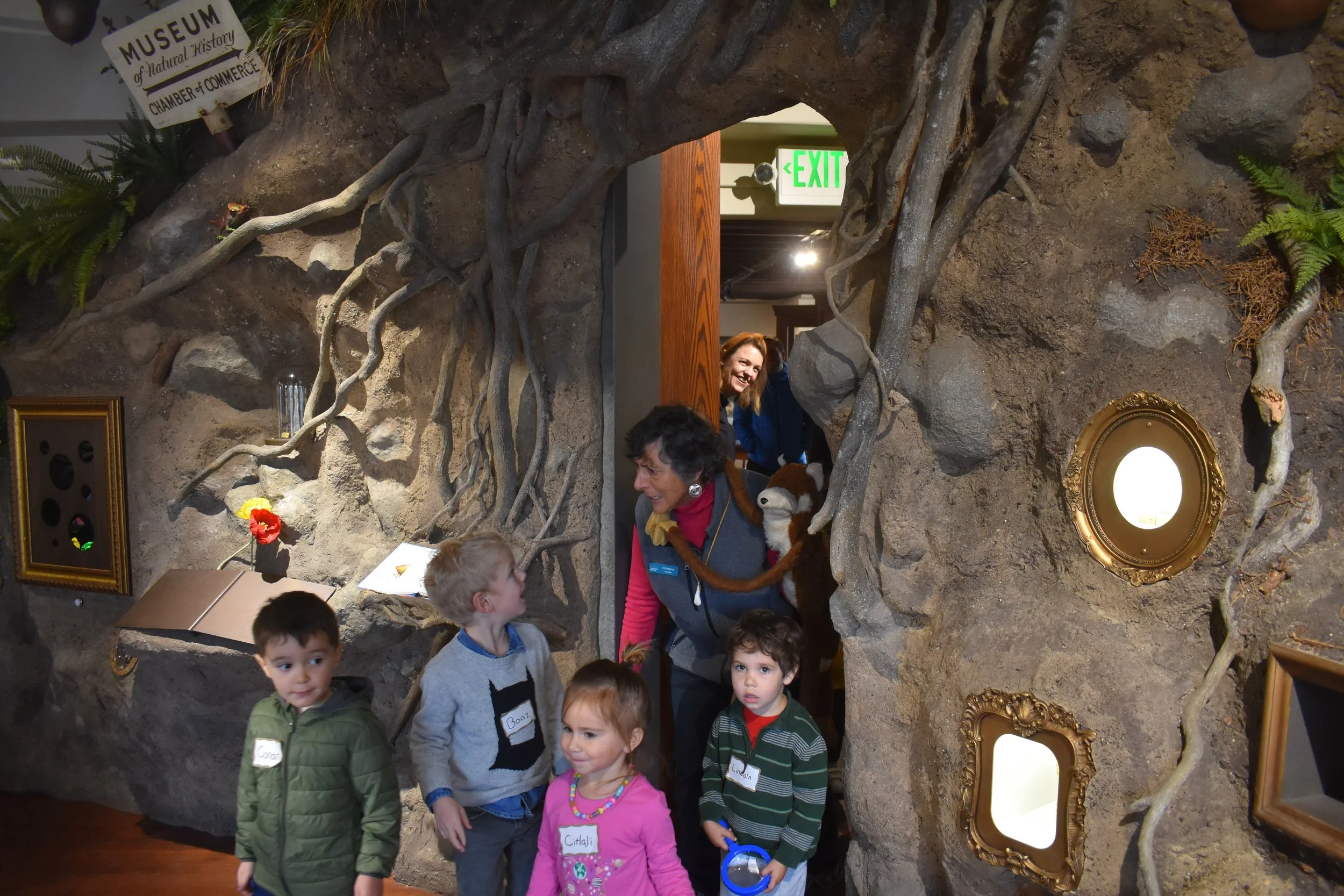Exhibits

Wonder
Created in partnership with Blue Rhino Studio to inspire imagination, curiosity, and exploration, Wonder is the embodiment of how fantastical and magical the natural world is, with every aspect built to delight the senses in themes celebrating the incredible worlds of insects, exploration, plants and animals, culture, and ideas. The Museum’s famous Sands of the World display has returned in an updated casing. Come visit and see for yourself!
“Over time we have accumulated a huge and diverse collection including manmade and natural items from around the world. In pursuit of our mission as a local natural history museum it has been difficult to find opportunities to display materials from further abroad, but Wonder has given us the chance to use these resources and create an oversized cabinet of curiosities that we hope will inspire curiosity in visitors of all ages!”
- Nate King, Research & Collections Manager
Gallery of Wonder Images
Changes of Monterey County
This exhibition explores the changing landscapes of Monterey County through memory and data, through what we remember and what we record. How have habitats changed? How might they continue to change? And what can we do to protect this place we all share?
-
Monterey Bay is home to numerous unique and interesting environments and organisms that inhabit them.
All environments are always changing, sometimes changed by humans.
These changes can affect topography, hydrology, and the organisms that live in these places.
Climate change poses a looming problem of system wide changes.
Climate change is affecting local environments which affects the things living in them.
-
Share an appreciation of the diversity of habitats and species in Monterey County.
Increase awareness of the importance of preserving the natural areas we have.
Inspire involvement in community science and partnerships.
Understand how humans are part of natural habitats — and how our actions affect the world in positive and negative ways.
-
This section of the exhibit gallery explores the county’s mountain and woodland habitats. Visitors can learn why the two mountain ranges host such different habitats. The Santa Lucias catch fog from the coast and create arboreal mountain islands. On the wetter west-facing side of the mountains, Gowan cypress, Coulter pine, and redwoods grow.
-
Around the central rail overlooking the first floor is an exhibit area that focuses on visitor actions and impacts. Visitors can weigh the impact of their choices and make a commitment to a greener future.
-
Visitors move from the introductory area into a display about Monterey County’s coastal and marine habitats. Visitors can explore a diorama about the Monterey Bay that features the Museum’s otter mounts with supporting invertebrates. A video located on the reader rail below the diorama offers visitors a glimpse of an underwater scene that they might not be able to see otherwise.
-
This section of the exhibit gallery moves inland from the coast and into the county’s valley habitats. From productive agricultural fields to the chaparral, these habitats boast rich soils and incredible biodiversity.
Wonder on Wheels
Wonder on Wheels (WOW) van is our new mobile museum that launched in September 2024. This mobile museum is the culmination of years of planning with community input and support to bring the joy of discovery and Museum specimens to every learner in Monterey County!
WOW is a fully electric interactive van that brings the museum experience to all communities in Monterey County. WOW is designed to engage people of all ages and includes three themed interactive carts: Pollinators and Flowers, People and our Land, and Monterey Bay Wildlife. Each cart features local and native specimens from Monterey County and offers bilingual interactive activities such as opening drawers, flower dissections, scavenger hunts, and cultural crafts. The van's exterior is wrapped with vintage field guide-style drawings of local flora and fauna in Monterey County, allowing guests to color the illustrations. Additionally, the van is equipped with an interactive board called "Build your own Museum," where guests of all ages can create their own museum using magnetic pieces. Learn more below:
-
The first cart is named "Pollinators and Flowers" and includes three engaging activities: "Be a Bee," "Match the Pollinator," and "Flower Dissections."
In the "Be a Bee" activity, participants learn about the pollination process between flowers and bees. The "Match the Pollinator" activity helps individuals understand how different flower shapes, colors, and scents attract various pollinators, such as birds, bees, and beetles. Finally, "Flower Dissections" allows learners to explore the intricate anatomy of a flower by dissecting it, examining it under a microscope, and organizing the flower's anatomical parts.
Along with the three activity carts the cart also includes museum specimens like beetles, bees, flowers, butterflies, and more preserved specimens for all to view.
-
The second cart is named “Monterey Wildlife” and includes three main engaging activities: “Test your knowledge of local wildlife”, Who was here?”, and “Spot the adaptations”.
In the “Test your knowledge of local wildlife” activity, participants will look at clues like skulls, tracks, and fur patterns to guess which local wildlife they are observing. The “Who Was Here” activity encourages individuals to examine images depicting tracks, feathers, and other clues to determine what recently occurred in that image. Lastly, “Spot the Adaptations” invites participants to observe an animal puppet and identify characteristics that enhance its chances of survival.
Additionally, this cart is heavily equipped with museum skulls, furs, claws, and more crafty activities. Crafty activities like making a Zine and stenciling local wildlife tracks!
-
The third cart is named “People and Our Land” and includes three engaging activities: “Cart scavenger hunt”, “Chinese Fishing Village photos”, and “Ohlone basket weaving”.
In the "Cart Scavenger Hunt" activity, participants will search for materials in the cart and learn how these materials were used by the people of Monterey Bay. The "Chinese Fishing Village Photos" activity includes questions next to the CFV photos, which are designed to encourage individuals to immerse themselves in the past. The third activity, "Basket Weaving," provides cultural background on the significance of Ohlone basket weaving to the Ohlone people and includes instructions on how to weave an Ohlone basket.
Rent our Mobile Museum
Why rent Wonder on Wheels? It provides an immersive learning experience that brings the museum's offerings to your location, creating an unforgettable event for all ages. From exploring how pollination impacts food production to understanding local wildlife through animal skulls and pelts and learning traditional skills like basket weaving or fishing methods, WoW delivers a fun, engaging experience for all.
To rent, simply contact the museum via email to discuss customizable packages that suit your needs. Information on space requirements, scheduling details, and activity options will be provided. This personalized process ensures the best fit for your event. Bookings will open in 2025, and you'll be able to find WoW at libraries, community centers, and other venues throughout the County.
Bird Gallery
The Bird Gallery is a vibrant showcase of the region's avian diversity. Featuring an extensive collection of taxidermied birds, the gallery highlights species native to the Central Coast, from the majestic California condor to the colorful Anna's hummingbird. Detailed exhibits provide information about each bird's habitat, diet, and behavior, helping visitors appreciate the unique adaptations and ecological roles of these feathered creatures.
Interactive displays and educational programs in the Bird Gallery engage visitors in hands-on learning experiences. Touch screens, sound stations, and bird-watching activities allow guests to explore the fascinating world of birds more deeply. By emphasizing both the beauty and ecological importance of birds, the gallery fosters a greater appreciation for avian conservation and encourages a deeper connection to the natural environment.
Jade Beneath the Sea
This exhibition will offer a unique opportunity to explore and expand the rich, multifacitied story of local jade. It will highlight not only the natural world of our county, including its distinctive biological and geological history, but also will honor the diverse individuals who have played and continue to play a significant role in the jade narrative.
Opening in June 2025, the Big Sur Jade exhibition will delve into both our local jade history and, eventually, the jade traditions of other cultures. This exhibit will offer a deeper understanding of how jade has been revered as a sacred mineral throughout time. As a sponsor, you can help illuminate these profound stories and foster an appreciation of jade’s significance in both our local and global heritage.
Chinese Fishing Village
This exhibit, created by California State University, Monterey Bay Museum Studies intern Marisa Mercado, presents the history of the Point Alones Chinese fishing village. In 2012, two years after Mercado developed informational panels that detail the history of the Chinese Fishing Village, artist Michael Croft used those panels to build a miniature diorama reconstruction of the historic location.
Fishing Village Film
For the past year we have been honored to work with partners to create 21 video clips that depict the historical significance of the Chinese Fishing Village. This documentary was created by Ibis Education & Media in partnership with the Museum, Monterey Waterkeeper, the Quock Mui Foundation, and Fishing Village descendants and has added curriculum for grades K-8. If you are a teacher who would like to bring the curriculum with the associated classroom kit and booklet to your students, please visit our education page.
-
The trek from southern China to the west coast of the United States isn’t an easy one. A group of families, likely hailing from the Kwangtung Province, set out to do just that in the early 1850s. Along the way, however, many of the Chinese boats became separated. Several of the boats landed in Medocino, while other landed near the Carmel River in the Monterey area. After making an initial camp at Point Lobos, the group made a more permanent settlement at Point Alones in Pacific Grove. It was here they developed their fishing village, where they would stay for many years to come., only their presence wasn’t destined to last. The village burned to the ground on May 16, 1906. The families, without a village to call their own, soon dispersed throughout the region. Many established a small village at McAbee Beach in Monterey.
-
Those who lived in the village were the first Chinese families to immigrate to America, according to historians. Prior to that, only male day laborers immigrated to the country. In 1882, after the families arrived from China, U.S. politicians enacted the Chinese Exclusion Act, which prevented Chinese from becoming American citizens. According to the act, should a day laborer leave the country for any reason, they would not be allowed back in. Those that didn’t leave the country to live with their families were forced to remain in country alone. The act also required resident cards. Those found without their resident card were subject to deportation, according to the act. Glass plate photographs taken of many of the residents, kept at the Museum, are believed to have been taken for the cards.
-
The families living in the Chinese Fishing Village were the first to recognize the potential for commercial fishing in the Monterey Bay. Others quickly saw the benefit, however, and eventually pushed the Chinese from their daytime fishing grounds. Being resourceful, they began fishing for squid in the night, thus beginning California’s squid fishery – now on California’s largest fisheries.
“And yet the boats that ride in the haven are of strange outlandish design; and, if you walk into the hamlet, you will behold costumes and faces and hear a tongue that are unfamiliar to the memory. The joss-stick burns... and a man guiding his upright pencil from right to left across the sheet, writes home the news of Monterey to the Celestial Empire.”
Rumsen áchsest-akai (basket makers)
The Pacific Grove Museum of Natural History's “Rumsen áchsest-akai (basket makers)" exhibit showcases rare and historic Rumsen-Ohlone baskets from the Central Coast.
Along with the historic baskets, the exhibit displays native plants collected and processed by contemporary Ohlone basket weaver Linda Yamane. It also shows a short video of her work, collecting and processing basketry plants for weaving a ceremonial basket. The exhibit includes large-scale models of coiling and twining techniques, and a hands-on station for visitors to weave strands in and out of wooden “basket” spokes.
Monarch Exhibit
The monarch exhibit offers a captivating exploration of the life cycle and migratory journey of the monarch butterfly. This exhibit highlights Pacific Grove's special role as a key overwintering site for these butterflies, often referred to as "Butterfly Town, USA." Visitors can learn about the incredible 3,000-mile migration that monarchs undertake from Canada and the northern United States to the central California coast. Detailed displays and informative panels explain the monarchs' stages of development, from egg to caterpillar to chrysalis to adult butterfly.
Interactive elements and multimedia presentations enhance the learning experience, allowing visitors to observe live specimens and participate in activities that demonstrate the challenges monarchs face during their migration. The exhibit also emphasizes the importance of conservation efforts to protect the monarchs' habitats and the milkweed plants essential for their reproduction. By showcasing the delicate balance of ecosystems and the interconnectedness of species, the monarch exhibit aims to inspire visitors to support and engage in conservation initiatives.
Native Plant Garden
A demonstration garden that runs all around the Museum, showing the varieties of ways you can plant, care for, and display California’s native and drought-tolerant fauna. The Native Plant Garden is the perfect place to learn and take a break during your visit for a snack or a peaceful moment under the buckeye tree. We’d like to thank the UCSC Master Gardeners for their efforts to make our garden the haven it is today.
Thanks to our MCGives 2023 campaign and a generous donation from the Monterey Peninsula Foundation, we will be reimagining and redesigning the garden with community input over the next two years.
Temporary Exhibits
From the Real to the Unreal
Celebrating the beautiful work of the West Baffin Eskimo Cooperative, From the Real to the Unreal displays engaging and beautiful pieces that were purchased from the collective in the 1960s and early 1970s by and for the Museum. Artists from this collective including Kenojuak Ashevak became known around the world for their work, and the title of this exhibit came from an Ashevak quote: “There is no word for art. We say it is to transfer something from the real to the unreal. I am an owl, and I am a happy owl. I like to make people happy and everything happy. I am the light of happiness and I am a dancing owl.”
The exhibit includes sketches, multiple styles of painting and print-making, and carvings of soapstone, serpentine, and other minerals. We hope you enjoy learning about the West Baffin Eskimo Cooperative and the talented artists from it.
Illustrating Nature 2025
Going strong with a 15 year collaboration we’re excited to launch Illustrating Nature 2025 with a special opening on Friday, May 2nd, from 6:30-8:30pm! The exhibit will run from May 2-June 15 featuring works from this year’s graduating class of the Science Illustration Program. Learn more below about the artists and get a look at their work.
Beyond Illustrating Nature
In partnership with the CSUMB’s Science Illustration Certification Program, this quarterly rotating exhibit features graduates from the program and exemplifies the matrix of science, art, and nature. Our current featured artist is Elena Hartley.
The Pacific Grove Museum of Natural History is a proud partner of this event and would like to recognize the efforts and thank our partners and contributors at the Quok Mui Foundation, the Coalition for Asian Justice, the Chinese Historical Society of America, Hopkins Marine Station, the City of Pacific Grove, and the Monterey Bay Aquarium.
Walk of Remembrance
This year’s Walk of Remembrance will take place on May 10, 2025, and is held to honor of the community of the Chinese Fishing Village at Point Alones and to celebrate the life of teacher, activist, and scholar Gerry Low-Sabado. There are many educational and inspiring events connected to the Walk and AAPI Heritage Month in May, and we hope you’ll come to enjoy this special day.
The Walk of Remembrance honors local history and culture. Designed to foster reflection and connection, the Walk of Remembrance invites visitors to explore Pacific Grove's rich legacy while enjoying the natural beauty of the Museum's surroundings. The carefully curated markers blend storytelling with historical context, creating an immersive experience that honors the town's contributions to education, conservation, and community spirit. This walk educates and inspires a sense of pride and continuity, linking present-day visitors with the generations that have come before.


